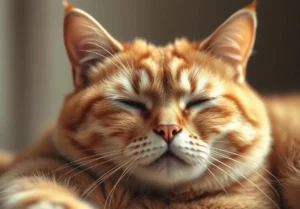Cats are known for their independent and sometimes unpredictable nature. One common behavior that many cat owners have noticed is their aversion to having air blown in their face. But have you ever wondered why cats react this way when faced with a gust of wind? Let’s explore the reasons behind why cats do not like air blown in their face.
Cats have sensitive whiskers and are highly territorial creatures, which contributes to their dislike of air blown in their face. The sensation of air blowing directly at them can be overwhelming and uncomfortable, causing them to react with either fear or aggression. Understanding this behavior can help you better interact with your feline friend and respect their boundaries.
Sensitive Whiskers
Cats have sensitive whiskers for a reason – these specialized hairs help them navigate their surroundings with precision. When air is blown directly on a cat’s whiskers, it can be quite overwhelming for them. Imagine someone shining a bright light in your eyes – it’s a similar sensation for our feline friends. The whiskers are highly sensitive to touch and airflow, so any disturbance can lead to discomfort and anxiety for cats.
One fascinating fact about whiskers is that they are connected to sensitive nerve endings, allowing cats to sense even the slightest changes in their environment. This ability helps them gauge distances, detect obstacles, and explore their surroundings effectively. Blowing air on their whiskers can disrupt this crucial sensory function, making them feel disoriented and vulnerable.
To put it simply, blowing air on a cat’s face is like interfering with their built-in GPS system. It’s essential to respect their whiskers and avoid subjecting them to unnecessary discomfort. Instead, offer gentle touches and strokes that cater to their sensitive whiskers, ensuring a positive and stress-free interaction with your feline companion.
Territorial Instincts
Cats are known for their strong territorial instincts, which play a significant role in how they react to external stimuli, such as air blown in their face. When a cat feels threatened or overwhelmed, they may exhibit defensive behaviors to protect their territory and maintain a sense of security.
Blowing air on a cat’s face can trigger their primal instincts, causing them to feel vulnerable and defensive. In the wild, sudden movements or unexpected sensations could signal potential danger, prompting a cat to react swiftly to defend themselves. This innate response is deeply ingrained in their DNA, influencing their reactions to various stimuli in their environment.
Understanding your cat’s territorial instincts can help you build a deeper bond with them and ensure a harmonious coexistence. By respecting their boundaries and providing a safe and secure environment, you can create a space where your cat feels comfortable and at ease.
Extra Insight: Cats have scent glands located around their face, which they use to mark their territory. Blowing air in this area could potentially disturb their scent markings and trigger territorial behaviors. It’s essential to be mindful of your cat’s natural instincts and create a peaceful environment that caters to their innate behaviors.
Fear Response
When faced with a sudden blast of air in their face, cats may exhibit a fear response. This reaction stems from their natural instincts to protect themselves from potential threats. Just like how we might startle at a loud noise, cats can feel startled and threatened by a sudden rush of air in their face. It’s essential to respect their boundaries and avoid blowing air in their faces to prevent causing unnecessary stress or fear in your feline friend.
Aggressive Behavior
Some cats may respond aggressively when air is blown in their face, which can be linked to their innate instincts. Cats are territorial animals, and they may interpret air blown in their face as a challenge or invasion of their personal space. This can trigger a defensive response, leading to hissing, swatting, or even biting. It’s crucial to understand and respect your cat’s boundaries to maintain a peaceful and harmonious relationship.
Additional Unique Insight:
– Cats have sensitive whiskers that help them navigate and perceive their surroundings. Blowing air directly at their face can be uncomfortable and overwhelming for them, as it disrupts their sensitivity and balance. This discomfort can lead to a negative reaction from your cat.
Remember, every cat is unique, and it’s essential to observe their reactions and respond accordingly to ensure their comfort and well-being. Avoid blowing air in your cat’s face and opt for more gentle and positive interactions to foster a healthy bond with your feline companion.
Respect Your Cat’s Boundaries
When it comes to respecting your cat’s boundaries, it’s essential to understand why cats may not like air blown in their face. Cats have highly sensitive whiskers and a keen sense of smell, so blowing air directly at them can be overwhelming and uncomfortable. Imagine someone blowing a strong gust of wind at you – it’s not the most pleasant experience, right? Cats feel the same way!
To respect your feline friend’s boundaries, avoid blowing air in their face as a form of interaction. Instead, opt for gentle petting or play with toys they enjoy. Give your cat the space and respect they deserve, and you’ll strengthen the bond between you without causing any discomfort.
Alternative Ways to Interact
If you’re looking for alternative ways to interact with your cat without resorting to blowing air in their face, there are plenty of fun and engaging options to explore. Try engaging your cat in interactive play with toys like feather wands or laser pointers. Cats love to chase and pounce, and these activities can provide mental and physical stimulation without invading their personal space.
Another alternative is to provide your cat with puzzle toys or treat dispensers. These engaging toys can keep your cat entertained while also satisfying their natural hunting instincts. By finding creative ways to keep your cat stimulated and engaged, you can build a strong and positive relationship with them without ever needing to blow air in their face.
Additional Unique Insight: Cats are creatures of habit and routine. By incorporating interactive play sessions into your daily schedule, you can establish a consistent bonding time with your cat that doesn’t involve any discomfort for them.
Remember, by respecting your cat’s boundaries and finding alternative ways to interact, you can create a harmonious and enjoyable relationship with your feline companion. Choose activities that your cat loves, and you’ll both have a purr-fect time together!
Interesting Facts About Cats
Cats have a highly sensitive sense of touch, especially around their whiskers and face. When air is blown in their face, it can be overwhelming and uncomfortable for them due to their sensitive whiskers. Cats rely on their whiskers for navigation and to assess their surroundings, so blowing air in their face can disrupt this sensory information, causing them to react negatively.
Additionally, cats have a natural instinct to protect their face and eyes from potential threats. Blowing air in their face can trigger this defensive behavior, as they interpret it as a potential threat or danger. Understanding these natural instincts and sensitivities can help us better empathize with our feline friends and avoid behaviors that may cause distress.
Ways to Create a Comfortable Environment
Provide plenty of hiding spots: Cats feel safest when they have access to hiding spots where they can retreat when feeling stressed or overwhelmed. This can be as simple as a cardboard box or a cozy cat bed in a quiet corner of your home.
Keep noise levels low: Cats have sensitive hearing, so loud noises can be stressful for them. Try to create a calm environment by minimizing loud sounds or providing a quiet space where your cat can relax.
Offer vertical space: Cats love to climb and perch up high to observe their surroundings. Providing cat trees or shelves can give them a sense of security and control over their environment.
Use pheromone diffusers: Feliway diffusers release synthetic pheromones that can help reduce stress and anxiety in cats. Placing these diffusers in your home can create a calming atmosphere for your feline friend.
Stick to a routine: Cats thrive on routine, so try to feed them, play with them, and interact with them at the same time each day. This predictability can help reduce their stress levels and create a sense of stability in their environment.
By creating a comfortable and safe environment for your cat, you can help reduce their stress and anxiety, making them happier and more content in their home.
Providing Enrichment for Your Cat
Looking for ways to keep your feline friend happy and engaged? Providing mental and physical stimulation can reduce their reactions to stimuli like air blown in their face. Consider investing in interactive toys, puzzle feeders, or even a cat tree to keep them entertained. Additionally, set aside time each day for play sessions to keep your cat active and engaged mentally.
Another great way to provide enrichment for your cat is through DIY activities. Create homemade puzzle feeders using items like toilet paper rolls or cardboard boxes. You can also make toys out of simple household items like string or paper bags. This not only provides mental stimulation but also strengthens the bond between you and your cat.
For an extra-special treat, consider introducing your cat to activities like clicker training or teaching them new tricks. This not only keeps them mentally stimulated but also provides a fun bonding experience for both of you. By keeping your cat mentally and physically engaged, you can help reduce their negative reactions to stimuli like air blown in their face while ensuring they lead a happy and fulfilled life.
Why Cats React to Air Blown in Their Face
Cats have a highly sensitive sense of smell and whiskers that are important sensory tools for them. When air is blown in their face, it can disrupt these sensitive areas, causing discomfort and stress. Additionally, cats are natural predators and highly attuned to their environment, so sudden movements or unexpected sensations like air blowing in their face can trigger their instinctual fight-or-flight response.
To a cat, air blown in their face can also be perceived as a threat or challenge, as it interferes with their control over their immediate surroundings. This can cause them to react defensively or become agitated. To avoid causing distress to your cat, always be mindful of their sensitivities and avoid blowing air in their face.
Remember, each cat is unique, so it’s essential to understand your cat’s individual preferences and boundaries. Creating a safe and comfortable environment for your feline friend is key to fostering a strong and trusting bond between you. By respecting their personal space and avoiding behaviors that may cause discomfort, you can ensure a harmonious relationship with your cat.
Alex, a passionate animal lover, has experience in training and understanding animal behavior. As a proud pet parent to two dogs and three cats, he founded AnimalReport.net to share insights from animal experts and expand his knowledge of the animal kingdom.




